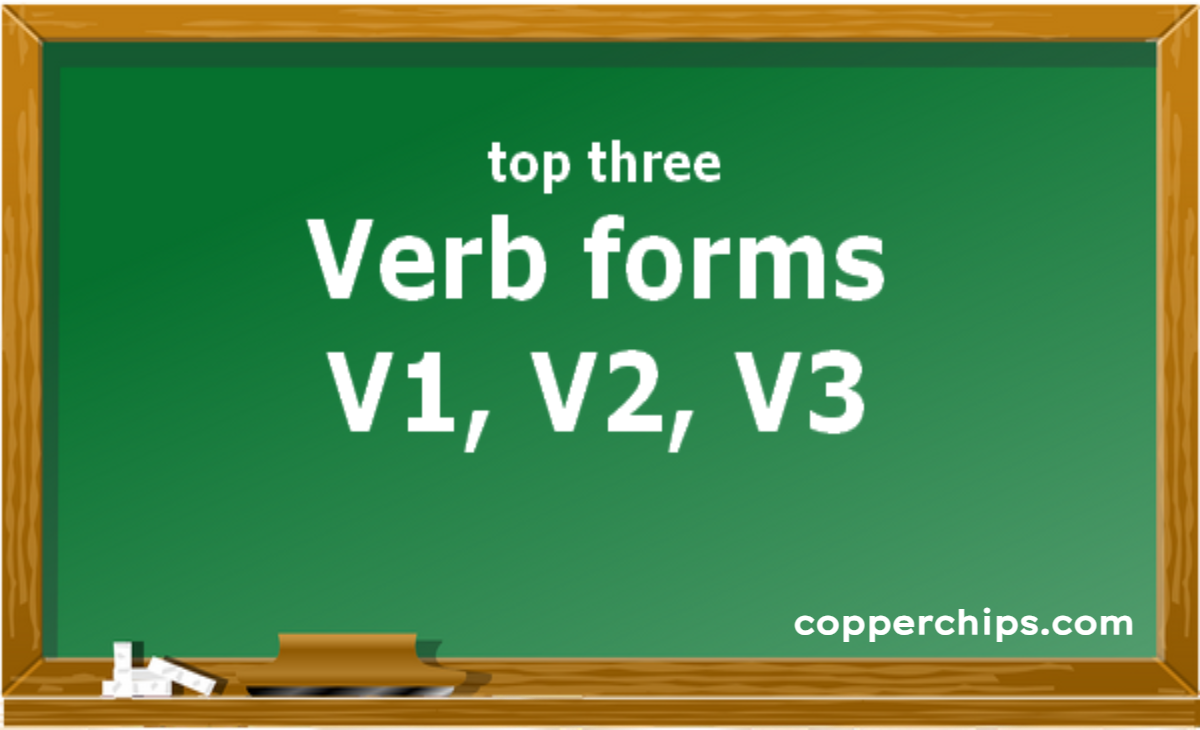In English grammar, v1 v2 v3 verbs are the heartbeat of sentence construction. Without them, speaking or writing correctly would be nearly impossible. These forms guide how we talk about the past, present, and future. And even if grammar sounds boring at first, this topic is surprisingly simple once it’s explained properly—and yes, we’re going to do exactly that here. So buckle up!
What Are v1 v2 v3 Verbs?
The terms v1, v2, and v3 refer to the three main forms of a verb used in English grammar:
V1 is the base form (e.g., “go”)
V2 is the past simple form (“went”)
V3 is the past participle form (“gone”)
These forms are essential for creating different tenses and conveying the correct time and action in a sentence. For example:
I go to school every day. (v1)
Yesterday, I went to the library. (v2)
I have gone there many times before. (v3)
You May Also Like: 30 Powerful MCQs on Elementary School Classroom in a Slum
Why Do v1 v2 v3 Verbs Matter in English?
Understanding v1 v2 v3 verbs is key to building strong grammar skills. These verb forms help students create correct sentences by showing when an action happens—past, present, or future. When used the right way, they make speaking and writing much easier to follow. In school, especially during exams or writing tasks, knowing which verb form to use can mean the difference between a right or wrong answer. Moreover, clear grammar gives students the confidence to speak up, write stories, or even answer questions without hesitation. Think of these verb forms as the tools you need to build sentences. Just like a house can’t stand without strong bricks, your sentences can’t make sense without the right verb forms.
Regular vs. Irregular Verbs in v1 v2 v3
English verbs come in two types:
Regular verbs: Follow a pattern. For example, “walk – walked – walked”.
Irregular verbs: Do not follow patterns. For example, “eat – ate – eaten”.
This is where most learners get confused, but with a little practice and examples, things become easier.
| Verb | V1 | V2 | V3 |
|---|---|---|---|
| Go | go | went | gone |
| See | see | saw | seen |
| Play | play | played | played |
| Buy | buy | bought | bought |
| Run | run | ran | run |
Forming Sentences Using v1 v2 v3 Verbs
Learning how to use v1 v2 v3 verbs in sentences is one of the most important grammar skills. Each form plays a special role in showing when something happens. The v1 form, also called the base form, is used for actions happening in the present, like in the sentence, “I play football.” The v2 form is used to describe actions that happened in the past, such as, “I played football yesterday.” Lastly, the v3 form, also known as the past participle, is used with helping verbs like has, have, or had. For example, “I have played football before.” When you understand which verb form to use, your sentences will sound clear, correct, and natural.
Using v1 v2 v3 Verbs in Tenses
English tenses depend greatly on using the correct v1 v2 v3 verbs, and choosing the right one helps express time clearly. The present simple tense uses the v1 form to talk about habits or facts, as in, “She sings.” When describing something that happened in the past, the past simple tense uses the v2 form, like “She sang yesterday.” Meanwhile, the present perfect tense combines a helping verb (has/have) with the v3 form, as in, “She has sung beautifully.” Knowing how to switch between these tenses allows writers and speakers to tell stories or share ideas without confusing their audience. Smooth transitions between tenses not only improve grammar but also make communication more effective and enjoyable.
Common Mistakes with v1 v2 v3 Verbs
Many students confuse:
V2 and V3 for irregular verbs
Forget to use helping verbs with V3
Mix up tenses completely!
For example: ❌ I have went to the shop.
✅ I have gone to the shop.
Always double-check which verb form is needed.
Tips to Master v1 v2 v3 Verbs
Group verbs into regular and irregular.
Practice using verbs in real sentences.
Create flashcards with v1, v2, v3.
Read stories and underline the verb forms.
How to Remember Irregular v1 v2 v3 Verbs
Here’s a simple trick:
Use rhythm or songs (like “eat, ate, eaten – yeah!”)
Group similar-sounding verbs: sing-sang-sung, ring-rang-rung.
Fun Practice Ideas for Learning
Make a verb journal.
Play verb matching games.
Try apps like Quizlet.
Take online grammar quizzes.
Make learning fun, and it’ll stick longer!
Top 50 v1 v2 v3 Verbs You Should Know
Here’s a list of 50 verbs you should memorize:
| V1 | V2 | V3 |
|---|---|---|
| be | was/were | been |
| have | had | had |
| do | did | done |
| make | made | made |
| write | wrote | written |
| take | took | taken |
| give | gave | given |
| begin | began | begun |
| drive | drove | driven |
| break | broke | broken |
v1 v2 v3 Verbs in Passive Voice
How to Teach Kids About v1 v2 and v3 Verbs
Teaching kids about v1 v2 and v3 verb can be both fun and effective when done with creativity and patience. Since younger learners often respond better to visuals and stories, using cartoons, colorful pictures, and animated videos can help them connect verbs with actions easily. Storytelling is another great method—ask children to retell a simple tale while changing the verbs into past or perfect forms. For example, if the story says, “The dog runs,” ask them to say, “The dog ran,” or, “The dog has run.” Including examples from familiar books or TV shows makes the learning feel natural. Most importantly, consistent repetition and usage in everyday conversations will help them remember and apply these forms without pressure. With time, kids begin to understand the verb changes just like they pick up new words.
v1 v2 v3 Verbs in Exam Questions
Exams love testing this! Examples include:
Fill in the blank: She has _____ (go) to the mall.
Rewrite: He eats pizza → Passive form
Correct answers rely on knowing your v3 verbs!
Printable Resources for v1 v2 and v3 Verbs
Many free PDFs and worksheets online can help. Look for:
Verb tables
Tense charts
Verb practice pages
These are useful for review and revision.
FAQs
What is the difference between v2 and v3?
V2 is the simple past. V3 is the past participle used with helping verbs.
Can v1 v2 v3 be the same word?
Yes, for regular verbs like “play – played – played”.
How do I know if a verb is irregular?
If it doesn’t follow the “-ed” pattern, it’s likely irregular.
Is ‘been’ v2 or v3?
‘Been’ is the v3 form of the verb “be”.
How many v1 v2 v3 verbs are there in English?
Thousands! But start with the top 100 and build from there.
Why is v3 important in passive voice?
Because every passive voice sentence uses the v3 form with helping verbs.
Conclusion
Understanding v1 v2 v3 verbs makes you a better speaker and writer. With daily practice, this once-confusing topic becomes second nature. So next time someone asks, “Have you ever gone skydiving?”—you’ll know not just the answer, but the grammar too.








